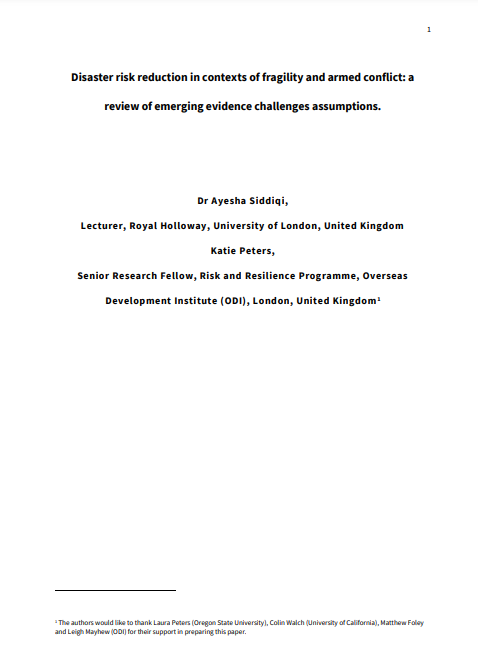This paper examines the reasons for this gap in understanding, and proposes ways to move forward. It challenges key assumptions guiding the DRR agenda, and then takes the conversation beyond the current focus in the literature on disasters in conflict-affected areas – namely whether a causal relationship exists between the social processes of disasters and conflict, and whether that relationship is positive or negative (see for instance LeBillion and Waizenegger, 2007; Nel and Righarts, 2008; Kreutz, 2012). Much attention has been focused on trying to establish a more direct causation between disasters and conflict instead of identifying potential opportunities to advance DRR interventions in conflict affected areas and addressing existing barriers and mis-understandings in this field. We argue that this has serious implications for achieving Target E: “Substantially increase the number of countries with national and local disaster risk reduction strategies by 2020” of the Sendai Framework (UNISDR, 2015).
Disaster risk reduction in contexts of fragility and armed conflict
January 1, 2019

